Spring is the main time for planting and sowing the first spring colors that will delight with bright flowering. Petunia is considered among the most popular types of colors that are one of the first to disperse their bright bells and decorate not only window sills in the houses, but also a household plot. This species is simply a huge number of subspecies and varietyaries, characterized by the peculiarities of cultivation and appearance. In recent years, a variety of vegetative petunias has been greatly popularity, which are inherent in more varied and spectacular forms of cookistic and brighter flowering.
Many will immediately have a question: Vegetative petunia - what is it? It's simple, to this group include hybrid varieties of petunias, which multiply an extremely vegetative method, and more specifically, the method of drawing. However, completely eliminate the seed reproduction of these plants is also not worth it.
In this article, consider the peculiarities and characteristics of vegetative petunia, we note the varieties and rangers, which can be attributed to this group of petunition. We describe the most important moments of agrotechnical cultivation of Petunia Vegetative.
Features and morphological description of vegetative petunia
Petunia is one of the most beautiful spring colors that will be a real decoration of any plot. Poves perennial or annual herbaceous or semi-staple flowering plants that belong to a large petunia family (Petunii). The first name of this plant was Nicotiana axillaris, which was given by Petunia by the French researcher Jean Baptiste Lamarcom. It was this person that one of the first in 1793 discovered him in South America and described the appearance. Hence the name "Nicotiana", due to similarity with tobacco leaves. Ten years later, several more species of this plant were discovered and described, which subsequently allocated in a separate genus and called it Petunia, which translated from Brazilian means "tobacco".
To date, there are a large number of petunition species and regularly in the market of flower growing appear all new derived varieties of this flower, as the breeders of all over the world are working to create a variety of petunia hybrids. It is worth noting that many species and varieties of petunia can be multiplied independently with the help of seeds. Petunia Vegetative, on the contrary, is multiplied with an extremely vegetative way, i.e. With the help of cuttings. This group of vegetatively breeding petunitions can be attributed to the plants of various ranges, most often with terry flowers and representatives of the ampel-type. It is the colors of these species that are quite difficult to grow with the help of seeds, since a big half loses his germination, get seedlings problematic. In this situation, the revenue comes the vegetative reproduction of Petunia, which guarantees the rapid and efficient production of young plants.
Many varieties of petunia can multiply both seeds and cuttings. However, in recent years, Japanese scientists have replaced a completely new subgroup of ampeline petunias, which can only be diluted with cuttings. This is a petunia of Surfinia. Also in the classification of petunition you will not find a separate group of colors called "Vegetative Petunia", since such a definition is called the varieties of these colors from various species that multiply only with stalling. Vegetative Petunia, Surfinia, Calibaoa, Cascadias, Tambelin and others - varieties of petunias that can be considered vegetative.
Petunia Description Vegetative:
- Petunia Vegetative - this is most often a long-term grassy or semi-staple plant, which can be represented in different forms, and more specifically in the form of cascade or ampel plants, small shrubs.
- Root system Petunia weakwell, rod with apparent roots. It should also be noted that the root system of this plant is not deep, so you need to be attentive when weeding and loosering soil.
- In the form of petunias, there may be a reprehensive, fluttering, which include such types of this plant as ampel petunia and cascade, multiplying in most vegetative ways.
- The height of petunia vegetative depends primarily from a particular variety. On average, the plant can grow at a height of 20 cm to 60 cm. If we talk about contemporary contemporaries taken in Japan, their hanging branches can reach lengths up to 2-2.5 m. However, in our latitudes it is difficult to grow such beauty, so branches can Maximum reach 1 m.
- The plant stalks are rounded, have a bright green color, branches and foliages grow in large numbers.
- Vegetative petunia leaves are located on the stems, depending on the variety can be completely different form. Tint of foliage green or dark green, sheet plate is covered with vile.
- The main ornament of petunia vegetative - flowers that have a funk-shaped form. May be simple and terry. The flower consists of 5 intoxicated petals, the edges of which can be straight, wavy and corrugated.
- The color range of petunia colors is authentative, as it is these hybrid varieties that can boast the most saturated and bright colors: all shades of red, burgundy, burgundy, pink, blue and purple, white, cream, two-color.
- Petunia is a plentiful flowering plant, so during flowering it is capable of decorating any flowerbed, a plot or terrace.
- It is worth noting that petunia can be grown in indoor conditions and in the open soil. Especially beautiful look ampeline petunias planted in porridge and hanging pots.
- Almost all the Amplishi Petunia's range today are vegetative, as practically do not multiply in a seed way, some varieties never start seeds at all. Such groups can be attributed to Surphinia, Copter, Tambelin, Cascadias, Superstuna and others. Many gardeners in this group of vegetative petunitions also include Calibao, but this plant today is allocated to a separate genus and is not a petunia, although it was earlier and was part of this large family. It is worth noting that vegetative petunias and caliberoa have a large number of similar signs and features.
Variety of varieties of petunias vegetative
As noted above, a separate group of vegetative petunition does not exist. This name is determined by petunias that multiply only vegetatively, so you can attribute here a variety of treasures and varieties of culture. To speak more precisely, the vegetative is perennial petunias from ampel-sorters and varieties of caliberoa, which have bright decorative signs that remain only in vegetative reproduction. Undoubtedly, some varieties can be diluted and using two ways, both vegetative and seed, but in the latter case, the results may disappear - the predominant majority of young plants will inherit simple species features. If we talk about the Surfinia group, then these flowers seeds do not multiply at all.
Consider the most popular and vivid varieties of vegetative petunia:
- Vegetative Petunia Cascadias Rome Chianti. This variety of petunition belongs to the variety of ampeline petunias Cascadias. In height, the plant can reach about 20-30 cm, is characterized by high bush. This vegetative petunia creates very quickly and takes the right spherical shape. During flowering, all branches are thickly covered with simple purple-raspberry flowers with white border along the edge.
- Petunia Vegetative Cascadias Bicolor Cabernet. This is a very beautiful variety with two-color colors: white and raspberry stripes. A plant has a rapid growth and early flowering period.
- Petunia Vegetative Salmon Velvet. This is a variety of sulfonia, which is distinguished by a beautiful ampel curl form. The plant is formed by sufficiently long hanging shoots, which are thickly covered with green leaves and gentle pink or purple flowers. In length, shoots can grow about 80-85 cm.
- Petunia Vegetative Burgundy. This variety of plants also refers to the well-known Surfini range. The main decoration of the petunia of this variety is beautiful flowers having a bright saturated dark burgundy shade, which is so similar to the color of weathered wine.
- Petunia variety a vegetative dipper. Another representative of the variety of petunias of Surfinia, which is characterized by a beautiful and spectacular appearance. It is a rather lush bush, which, during flowering, thick is covered with bright purple terry flowers.
- Variety of vegetative petunia Table White. This representative of the Surfini is distinguished by long and abundant flowering. It pleases the eye with beautiful small colors-bells of a snow-white shade.
- Vegetative petunia Parpel Velvet. This grade belongs to the Surphine group. It is intended for landing in kashpo or hanging pots, as well as in floor pots, as its branches can reach lengths in 1 m. During flowering, the branches are thickly covered with bright purple flowers with a darker core.
- Millions of Million Belt Calibaoa. This range is represented by 12 different varieties of petunitions, which are characterized by the most diverse shades of colors. Here are white, raspberry, crimson-pink, red, lilac-purple, lemon-yellow, brown-yellow, cherry and other colors.
- Variety of vegetative petunia Baby Pink Surfinia. It features a compact form of cooks and pink flowers with dark raspberry veins.
- Sky Blue Surfinia variety. It can also boast of beautiful and long hanging branches, which in length can reach about 70-80 cm. Flowers of this plant of a beautiful celestial blue shade.
- Vegetative petunia blushing princess. Refers to the SUPERSEY Sortder, was bred by Japanese scientists, like many other varieties of this species. Differs on beautiful hand-pink flowers with greenish zev.
- The variety of petunia vegetative conchita velvet. This variety boasts beautiful terry flowers, which in large quantities decorate hanging shoots, flowers have a bright crimson.
- Petunia Vegetative PRISCILLA Tumbler. A variety with very beautiful and bright single colors that have a pale lilac shade with bright purple veins.
Petunia Vegetative reproduction
Many gardeners were accustomed to breed petunia only by seeds, but it is worth only once to see the beautiful bushes of vegetative petunia grown from cuttings, immediately wants to plant such beauty every year on their beds. Moreover, the advantages of the vegetative method of reproduction is enough. First of all, you will save your time, since with seed reproduction it is necessary to make a lot of actions to get young seedlings. In addition, with the help of breeding with cuttings, you can get beautiful plants with all maternal signs, which you are unlikely to get with seed reproduction. Consider in more detail all the stages of vegetative reproduction of petunition with cuttings.
- It is worth noting that when using the extension method, your petunia will get a strong root system and starts bloom for several weeks earlier than a plant grown by seed.
- First of all, you need to find a strong and healthy adult uterine plant by the variety you like, after which you can already begin the preparation of vegetative cuttings of Petunia.
- The hauling of vegetative petunitions can be carried out twice a year: early spring and at the end of summer, however, it is best to give preference to summer-autumn reproduction.
- At about the end of August or in early September, from the selected healthy bustle, it is necessary to cut up the top shoots with a length of approximately 6-7 cm with 2-3 interstices and 4-6 leaves. It is important to make a slice at an angle to make it possible to facilitate and speed up the rooting process.
- All lower leaves need to be cut, leaving only 2 tops.
- You can roighten the prepared cuttings in any nutritional soil. For this, perlite, vermiculitis, peat pills suitable.
- Alternatively, the cuttings of petunias in vegetative can be rooted in water. To do this, they are placed in water container and wait for the appearance of the roots, after which the plants in the pots are transplanted.
- When rooting the cuttings in the ground, do not forget to prepare suitable containers in advance to fill them with nutrient soil, after which you moisten it.
- It is important to remember that the cuttings can not be stored for a long time after cutting, a maximum of 2 hours. During this time, you must put them in the ground, otherwise their germination is significantly reduced.
- After rooting cuttings watered and covered with plastic or a plastic bottle to create a small teplichke.
- Regularly cuttings is necessary to humidify and ventilate. Remove the package only after the appearance of the first leaf cuttings.
- It is important to strictly observe temperature for growing cuttings. In winter, it should be about 18-20 degrees.
- When the first leaf is necessary to make the first prischipovanie for branching side shoots. It is also recommended every month to feed the cuttings fertilizers.
- Already in March, the side shoots can be used for grafting.
- In preparing cuttings in the spring, it is necessary to cut off a great escape and rooting them to the 1/4 part in nourishing the soil. Thereafter, as necessary to create a greenhouse conditions using a glass or film.
- When the cuttings will be first leaves, they can be transplanted into individual pots or permanent pots and vases.
- It is not necessary often pinch the cuttings, as it moves on the time of flowering.
If you decide to plant vegetative petunia seeds, remember that some varieties do not tie the seeds, so if you have to store a bag of seeds, for example, surfinii worth thinking about cheating. However, some varieties can still set seed, if desired, they can be collected and used for the breeding of young seedlings. But in this case, be prepared to get very simple plants without beautiful flowers.
Preparation before planting petunias autonomic
Of course, to cultivate varieties of petunias vegetative little harder than usual all annual petunias, for example, floribunda, but no complex actions do not have to spend. Most importantly, carefully and correctly prepare for planting, choose a location and procure high-quality planting material, and then you just have to hold land and wait for the rapid growth of the beautiful and spectacular vegetative petunias.
Step 1. Selection of planting material and vegetative preparation petunias
- First of all, you need to purchase a high quality and healthy planting material. This can be done in two ways: to grow your own from cuttings or vegetative buy petunia in a specialty store.
- To the territory of Russia, vegetative petunia seedlings are brought from the territory of Germany, Japan and other countries that are stiguously engaged in the selection of vegetative varieties. In this case, the main thing is to buy seedlings only in proven places, in reliable garden centers, where you really sell seedlings of the petunia variety you.
- Vegetative petunition varieties are very much, so you always have it from anything. Here the main thing is to take into account your preferences, landing site of petunia and cultivation conditions.
- If you buy ready-made seedlings, be sure to check them for damage. There should be no dry or yellowed parts, the soil in the pots should be wet and clean, without signs of mold.
Stage 2. Choosing Petunia Vegetative Place
- Petunia, especially hybrid varieties, are very loved by sunlight, so it is important to find an open place on its plot with a lot of sunlight. The terrace with suspended porridge is ideal, as ampel-free varieties are most often for vegetative petunias.
- It is important to protect the flowers from the rain, so it will be important for the presence of a canopy or larger colors nearby. This applies to such capricted petunitions like Surfinia.
- Find a plot that is necessarily protected from strong wind and drafts.
- When choosing a place for landing Petunia Vegetative, consider the existing garden composition and select partners in color color and height of bushes.
- If you plan the plants into the suspended pots, pick them up with the appropriate size with the drainage holes below.
Stage 3. Choice and soil preparation for vegetative petunia
- Petunia prefers to grow on nutritional soils, so if you plant seedlings in pots, it is recommended to purchase a special soil in a garden store.
- Also in the selected location should be nutritious, light soil with reduced acidity or neutral reaction.
- Petunia does not like moisture stagnation, so when planting plants on a flower, it is important to choose a hill.
- Before boarding, carefully disappears the selected area, add humus, squeezing ground, leafy ground, sand and peat. Mix everything thoroughly and scatter.
Petunia Landing Technology Vegetative
- In front of the planting seedlings of petunias vegetative in open soil, it is important for some time to temper young plants, since the sharp change of temperature regime can be destructive. For this, every day you need to carry a pot with seedlings to the street and leave in the sun.
- In the open ground, Petunia seedlings are planted in the middle or at the end of May, when the soil is completely warm.
- Since most vegetative petunitions are ampel varieties, they are most often planted into suspended vases or porridge, in boxes, which are then exhibited on the balcony or terrace.
- It is important to prepare an soil mixture for the boxes, consisting of humus, delicate and leaf land, sand and peat. At the bottom, be sure to pour the gravel drainage layer.
- In one pot, you can plant no more than two seedlings, if you plan the plants on the flowerbed, be sure to leave a distance of 20-25 cm between them.
- The seedlings do not need to plunge strongly.
- After landing, carefully compact the soil with your hands and abundantly moisturize it.
Petunia growing agricultural equipment: secrets and nuances of care
The care of vegetative petunias is not much labor, the main thing is to clearly assimilate that it loves this plant and how to perform all actions. As a result, you will get a beautiful and magnificent flowering plant, adorning your plot.
- Watering. Decorative varieties of petunias, such as ampel souffins, need more frequent and abundant irrigation. It is regularly necessary to water each flower with sufficient water. You can navigate to the soil - the soil should always be in a slightly moistened state. Good petunias responds to spraying.
- Swimming. Periodically around plants need to remove weeds. which can slow down the growth of colors. It is necessary to loosen the soil very carefully, since the root system of these colors is not very bueled.
- Feeding Petunia Vegetative reacts well to making feeding, and it is necessary to do it quite often. It is recommended to make fertilizers every week to stimulate flowering. At the time of the bootonization and bloom itself, it is necessary to fertilize petunia by phosphoric and potash fertilizers, you can also use complex minerals.
- Trucking vegetative petunia. To preserve the decorativeness of the custa of the petunia during flowering, it is recommended to regularly delete the shock-free buds. In the middle or at the end of summer, when the bloom is completed, you can trim shoots on half the length. It will stimulate the side branch of the shoots and the laying of a large number of flower kidney.
- Preservation of petunias in vegetative winter. Since the birthplace of petunia is tropical countries, then our frosts it does not tolerate. You can try to keep the plant so that it continues flowering next year. If there is no such possibility, you can simply prepare the cuttings. Even before the onset of frosts, petunias transplanted into individual pots and transferred to a warm room. All dry and weakened branches are removed there, you can cut all shoots, leaving 10 cm. It is important to maintain a temperature of 10-15 degrees.
Petunia Vegetative - Photo
Petunia is a beautiful and gentle plant that can decorate not only the room, but also a flowerbed. The breeders from all over the world work on the removal of more stable and bright varieties, which led to the appearance of vegetative petunitions that are easily and quickly multiplied with the help of cuttings and at the same time do not lose their motherhood decorative signs.

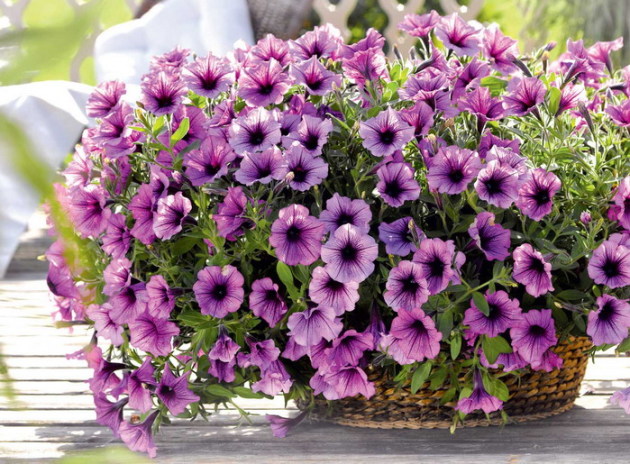
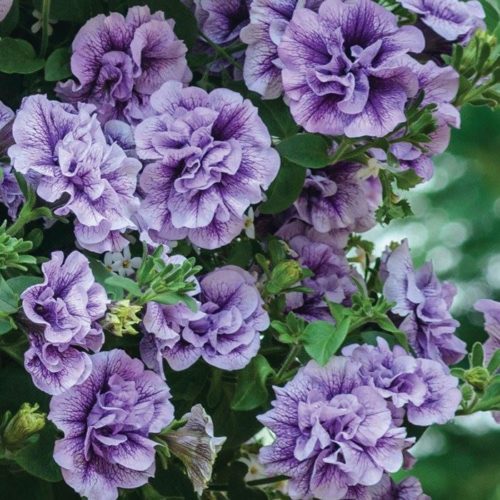
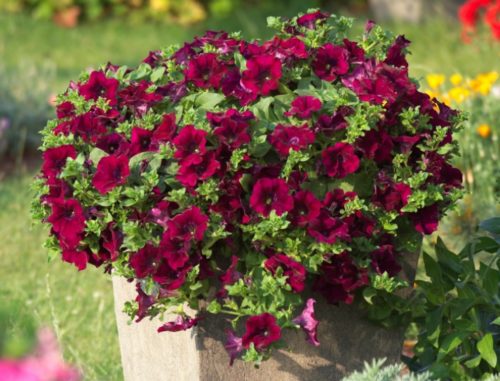
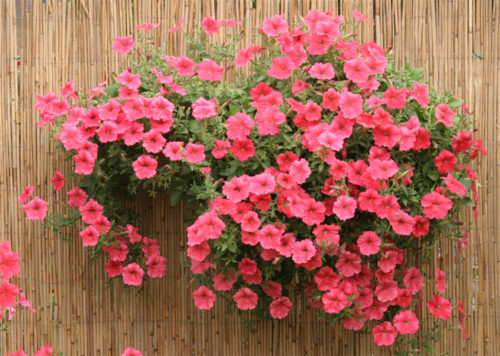

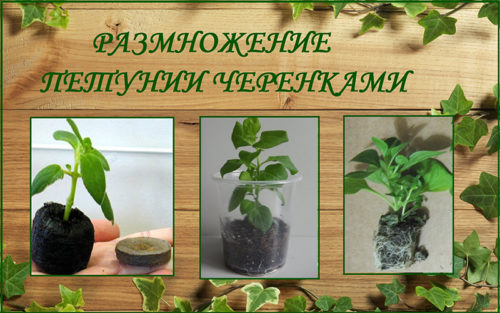
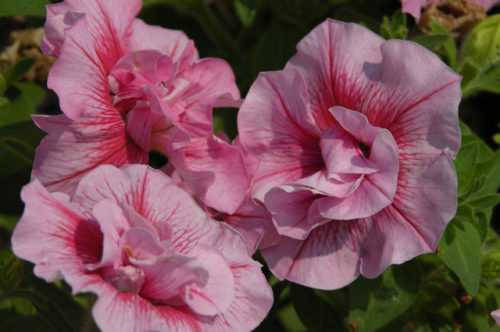
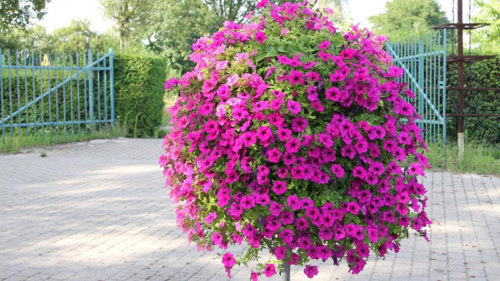
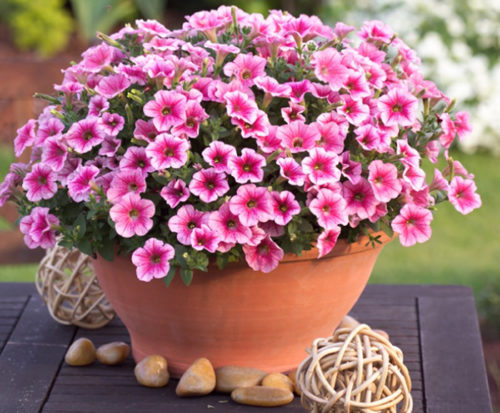
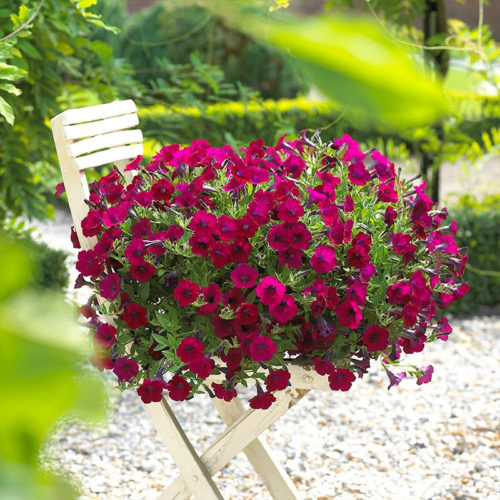
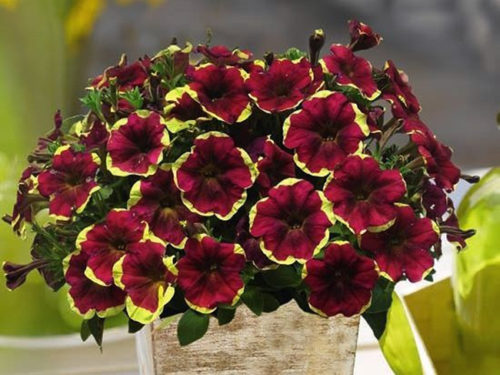
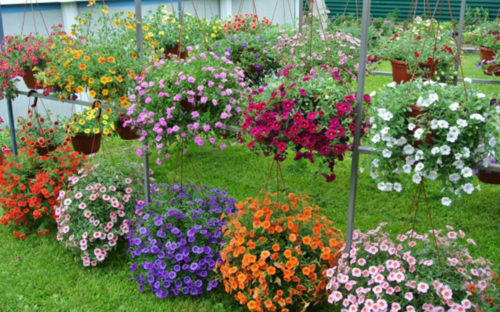
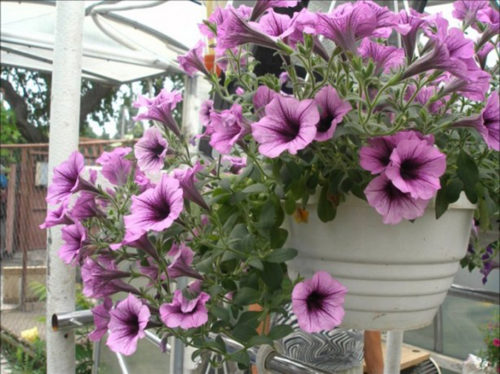
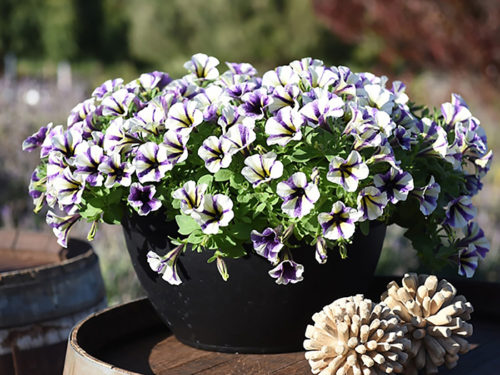












 Start a discussion ...
Start a discussion ...